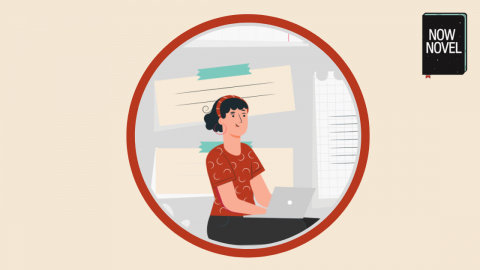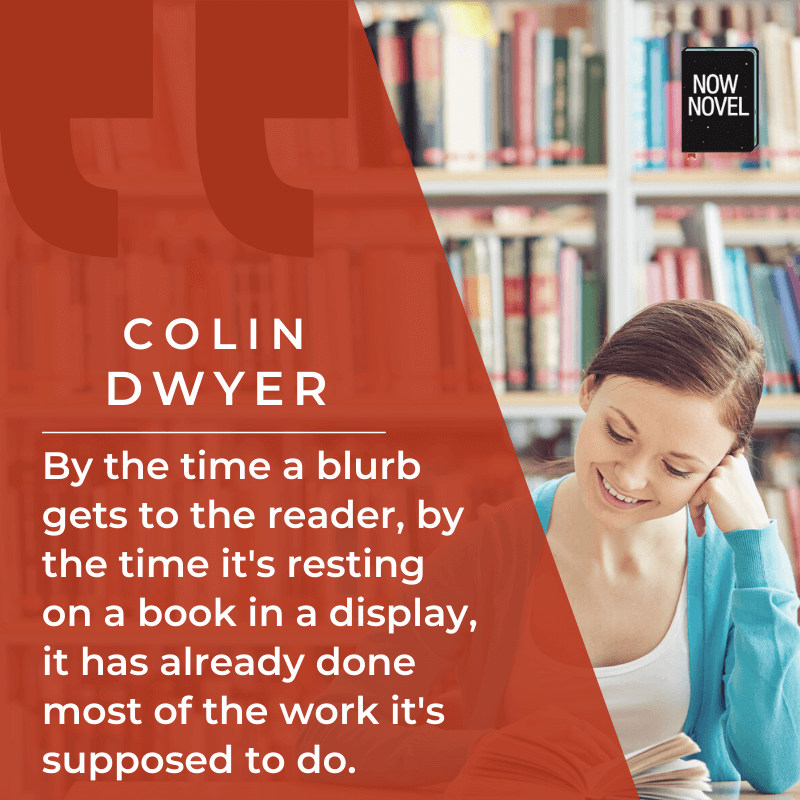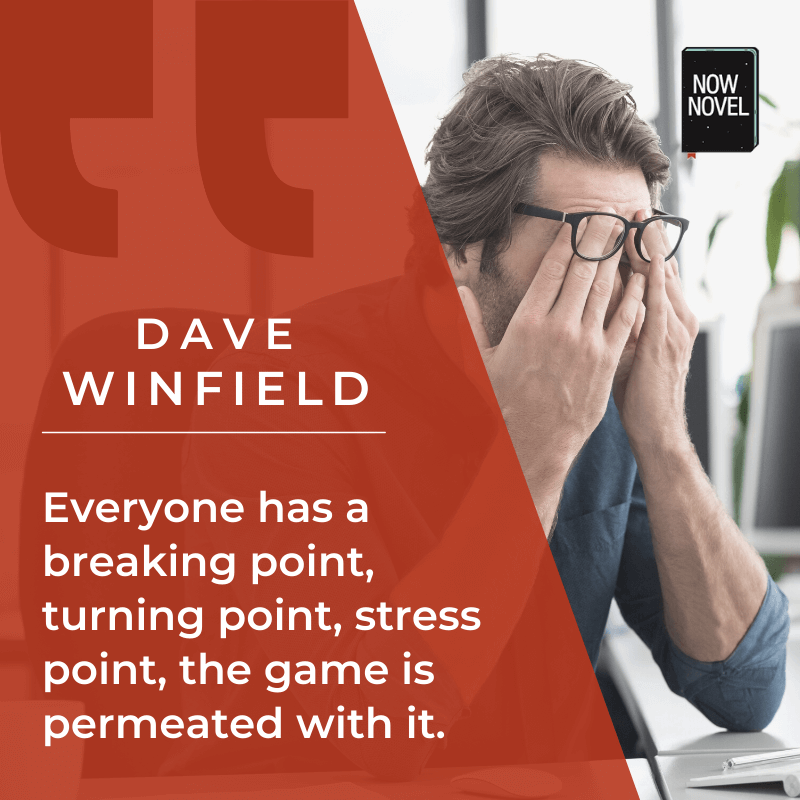Book blurbs are brief, promotional summaries on books’ back covers (or inside jackets) that sell the story. Knowing how to write book blurbs is useful for promoting your own work. It’s also handy if you are ever asked to write a blurb for another writer. Read 8 tips to write the best blurb for your book:
What is the blurb of a book?
Book blurbs are short summaries, usually around 150 to 200 words. Besides finding them on print book copies, with modern digital publishing, you’ll also find blurbs accompanying eBooks’ product pages on bookselling websites such as Barnes & Noble and Amazon.
According to Merriam-Webster, the word ‘blurb’ was coined by the American humorist Gelett Burgess, for a mock jacket for a book he presented at the annual dinner of the American Booksellers’ Association in 1907.
What is the point of a book blurb? Its purpose is dual:
- To engage and interest a potential reader so that they buy the book.
- To summarise key information such as the story’s main scenarios, settings, characters, conflicts and/or accolades or press the book has already attained.
Typically, the first edition of a book will feature a blurb focused on the story, like the example book blurb below from bestseller The Invisible Life of Addie LaRue by V.E. Schwab.
Subsequent editions may spotlight endorsements by other authors and/or spotlight extracts from complimentary press.
Now let’s explore how to write novel blurbs that do a fantastic job of selling your story:
How to write book blurbs: An easy checklist
- Use emotive language
- Spotlight setting
- Intrigue with inciting events
- Give your main scenario legs
- Tantalise with character details
- Tap into turning points
- Promise conflicts, dilemmas, consequences
- Show theme and subject interests
Let’s unpack these ideas further:
1. Use emotive language
Rule number one in how to write book blurbs is to use emotive language.
You don’t want to say to potential readers, ‘maybe read this book’. You want to seize their imagination immediately. Emotive language does this very well. Let’s dissect the opening paragraph for the book blurb example above:
A desperate woman makes a desperate deal in the dark – a bargain to live forever but be remembered by none.
The Invisible Life of Addie LaRue, V.E. Schwab (back cover)
The adjective ‘desperate’ immediately tells us the protagonist’s state when the story starts. It suggests urgency, an intense desire.
The other words are loaded with connotations. We could make a table of some of the blurb’s words and their emotional connotations:
| Word | Emotion |
| desperate | anxiety/fear |
| deal | hope/trust |
| bargain | relief/satisfaction |
| forever | hope/desire |
Breaking this blurb example into emotional connotations as above shows how this first paragraph pushes and pulls between negative and positive emotions. It pulls between tension and release.
Take a novel’s blurb yourself. Make two columns and write down key descriptive words (nouns and adjectives) and the emotions the words connote.
2. Spotlight setting
‘Where’ and ‘when’ are two of the fundamental ‘5 W’s’ of storytelling (who, what, why, where and when). They shape readers’ expectations and associations.
Let’s look at all the setting information we’re given in the book blurb example above, by category and order of appearance:
- France [country]
- 1714 [year]
- Manhattan [city]
- 300 years [duration of protagonist’s life]
- Centuries [time]
- Continents [place]
Note how the blurb moves from the specific (‘France, 1714’ in the first heading) to the broad (‘centuries, continents’). It’s like the blurb gives us a broad map overview, with pins stuck in key places of interest.
Your own book may not span multiple continents, countries, cities or centuries. Try to spotlight setting, however – it’s scope, the key places of interest in your story – in a similar way.
What about your setting changes? France in 1714 is a very different ‘where’ and ‘when’ to modern-day Manhattan. This promises the reader interesting change.
We also gather, through the way the blurb gives a sense of setting’s scope, that Addie will live for at least 300 years. This itself is a highly unusual aspect of setting.
What about your story’s setting stands out?
3. Intrigue with inciting events
Inciting events (AKA inciting incidents) are the key events that throw your main character into the process of change. A letter, a knock, a phonecall, a shock.
Another good rule of thumb in how to write book blurbs is to feature your main scenario and inciting event early. Start your blurb the way you start a story – with clear direction. The blurb example above references a ‘deal in the dark’, a ‘bargain to live forever’ that provides an extremely clear sense of inciting incident. It introduces the idea of Addie’s immortality clearly.
Another blurb example leading with inciting events comes from E. Annie Proulx’s Pulitzer-winning novel, The Shipping News:
At thirty-six, Quoyle, a third-rate newspaperman, is wrenched violently out of his workaday life when his two-timing wife meets her just deserts.
E. Annie Proulx, The Shipping News (1993), back cover.
The blurb’s intro has the emotive language mentioned above. Abrupt, visceral change is implied by the verb and adverb ‘wrenched violently’. There is a clear sense of inciting event: A change that comes about due to spousal infidelity, on the one hand, and an implied sticky end for Quoyle’s wife. Yet there is also a sense of mystery to these events. We don’t yet know their exact nature. So we read on.
4. Give your main scenario legs
Something the best book blurbs do well is to give the story’s main scenario legs.
What does this mean? That the story’s main scenario is given, in addition to an idea of how it sets off a chain of action and reaction, or choice and consequence.
Let’s dissect the second paragraph from the book blurb example from The Invisible Life of Addie LaRue. We’ve read that Addie makes a deal to live forever but be forgotten/invisible:
So begins the invisible life of Addie LaRue, shadow muse to artists throughout history, forgotten friend, confidante and lover, slipping away with the morning light. Addie passes through lives, desperate only to leave a trace of herself. Until the day she walks back into a small bookshop in Manhattan and meets Henry, who remembers her.
The Invisible Life of Addie LaRue, back cover.
This develops the main scenario (the immortality deal) in several ways, giving the story legs:
- We learn about the price/consequence of the protagonist’s choices in the inciting incident: Addie’s ability to be seen/remembered was what she gave up and we find she is desperate to leave a trace of herself.
- We understand more about Addie’s experiences stemming from the inciting incident: We learn some of the deal’s perks, e.g. being a muse to artists throughout history; living a breadth of experience not available to the typical mortal
Seeing the legs the author has given their main scenario, the reader browsing back covers may embrace the story and run with it.
5. Tantalise with character details
In deciding how to write a book’s blurb, you have very limited space to share key character details. You want to tantalise potential readers. Reveal what makes your main character(s) fascinating. Sell your book.
What interesting or unusual elements about your character can you pack into a short space in your blurb?
In Addie’s example, we get some very interesting character details in the blurb:
- A major deal the character strikes that comes at a price (a good action/consequence duo).
- An encounter with another character that complicates and intrigues (Addie meets another character who remembers her, Henry, which appears to break the rules of the deal struck in the inciting incident).
These are tantalising character details because they promise several ingredients that make stories exciting or interesting:
- Change
- Desire
- Choice
- Consequence
- Surprise (the encounter with Henry and his ability to recall Addie)
In your novel’s blurb, what character details will tantalise readers?
6. Tap into turning points
In storytelling, turning points are the key junctures where fates or fortunes change. Life-changing deals go through (or fall apart). Marriages are consecrated (or in Quoyle’s case, desecrated). When you learn how to write a book, creating riveting turning points gets easier with time.
When practicing how to write book blurbs, try to highlight at least one pivotal turning point. You can often spot a turning point in a ‘pivot’ word such as ‘until’ in the blurb to The Invisible Life:
‘Until the day she walks back into a small bookshop in Manhattan and meets Henry, who remembers her.’
Here, a specific day, capping off hundreds of years of invisibility as per Addie’s deal, is pinpointed.
To write about turning points in a blurb concisely:
- Give a precise when and where: We read ‘a small bookshop in Manhattan’ as the setting for a key turning point
- Give a brief yet teasing ‘what happens’: See ‘…and meets Henry, who remembers her’. The situation is curious given the conditions of the deal Addie made and how it breaks them. Yet the nature, emotion and specifics of the encounter are left a mystery for the reader to uncover
7. Promise conflicts, dilemmas and consequences
Conflicts, dilemmas and consequences are the lifeblood of engaging, riveting stories. We want to know what people endure, how it shapes them, what they choose when faced with impossible odds or options. We want the full chain of cause and effect, with all its wish, wonder and surprise.
The third paragraph of the book blurb example from The Invisible Life is all about conflict and consequence:
After 300 years, Addie’s life is restarting, but the devil never plays fair. As Henry and Addie’s lives start to intertwine, they must face the consequences of the decisions they’ve made and the prices to be paid.
The Invisible Life of Addie LaRue, back cover.
This part of the novel’s blurb promises conflict and a suspenseful scenario. Will Henry and Addie get what they want? How will the consequences of past choices mess with their lives moving forward? ‘The prices to be paid’ sounds ominous.
How will the third paragraph of your book blurb tease the cost of your own protagonist’s past and present desires and choices?
8. Show theme and subject interests
Typically, the final part of a blurb (before author bio information) will go broad. The reader has read hints about the curious main scenario, momentous inciting event and dilemma-filled turning point.
Last, you sum up elements of the story such as themes, subject or style. You give the reader a broad ‘about’.
In the blurb for Addie’s story, we read:
The Invisible Life of Addie LaRue is a dazzling adventure across centuries and continents, across history and art, about a young woman learning how far she will go to leave her mark on the world.
The Invisible Life of Addie LaRue, back cover.
Another example of a blurb’s final paragraph, from The Shipping News, refers to the tone/style of the novel, too (as well as – somewhat hyperbolically – Proulx’s acumen):
A vigorous, darkly comic, and at times magical portrait of the contemporary American family, The Shipping News shows why E. Annie Proulx is recognized as one of the most gifted and original writers in America today.
The Shipping News, back cover
Art, history, dark comedy, the American (or other nationality) family – what are the subjects and themes that are worth a shout in your blurb?
Ready to polish your blurb, cover letter or manuscript? Find out about Now Novel’s fiction editing services and get a no-obligation quote now.






2 replies on “How to write book blurbs: 8 tips for selling by summary”
Thank you for this! It is the most comprehensive coverage of book blurbs I’ve read. Using these principles will ad fire to what is my rather dull blurb.
Hi Jeff, thank you for the kind feedback. Good luck with adding fire to your blurb.